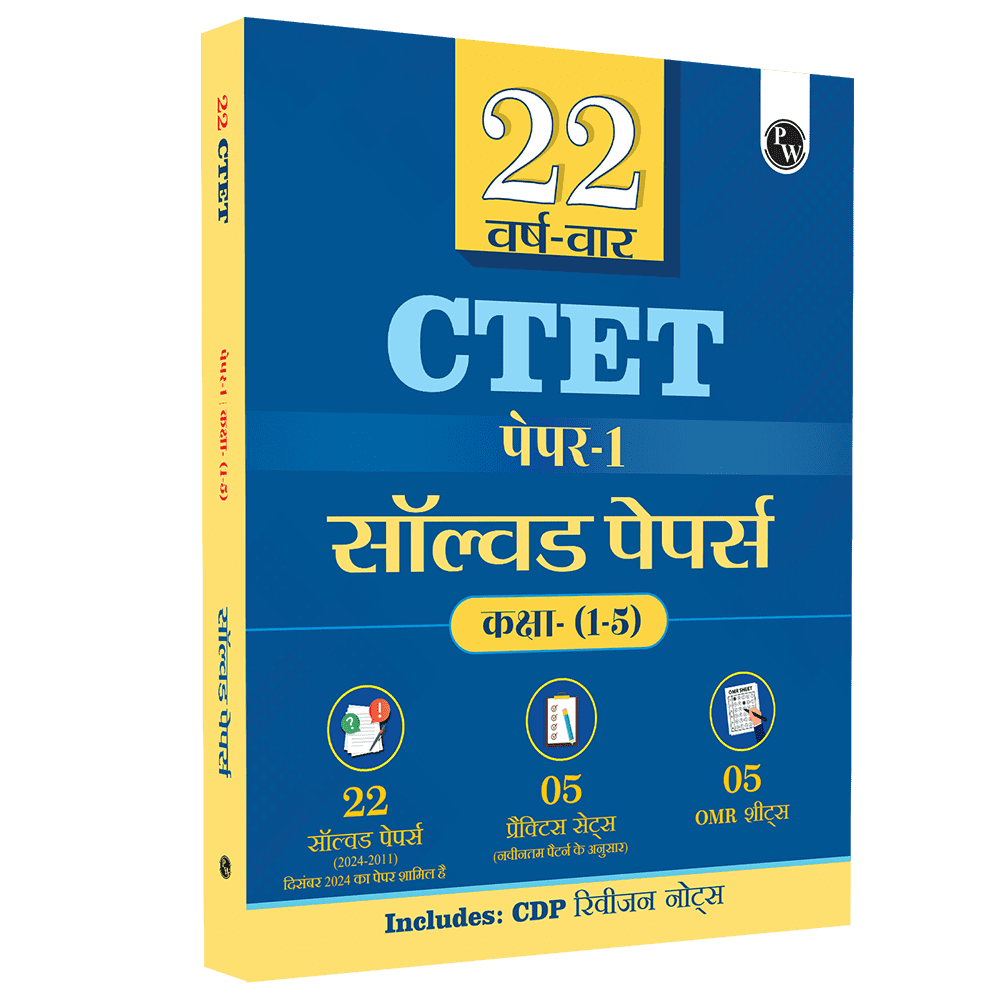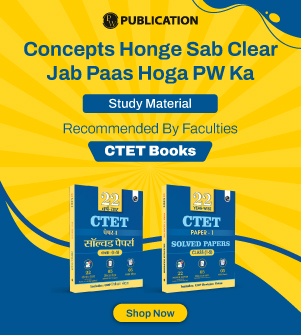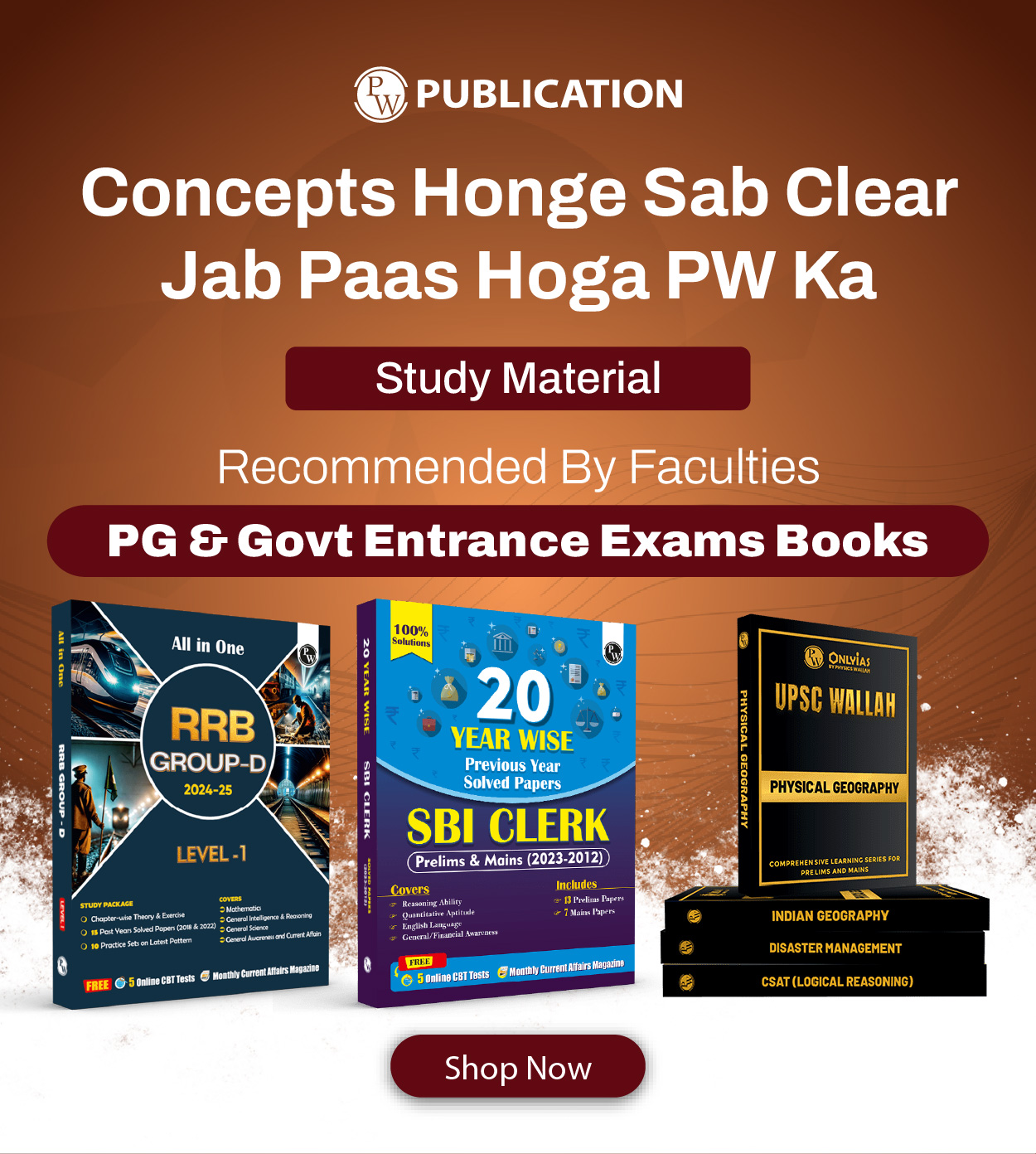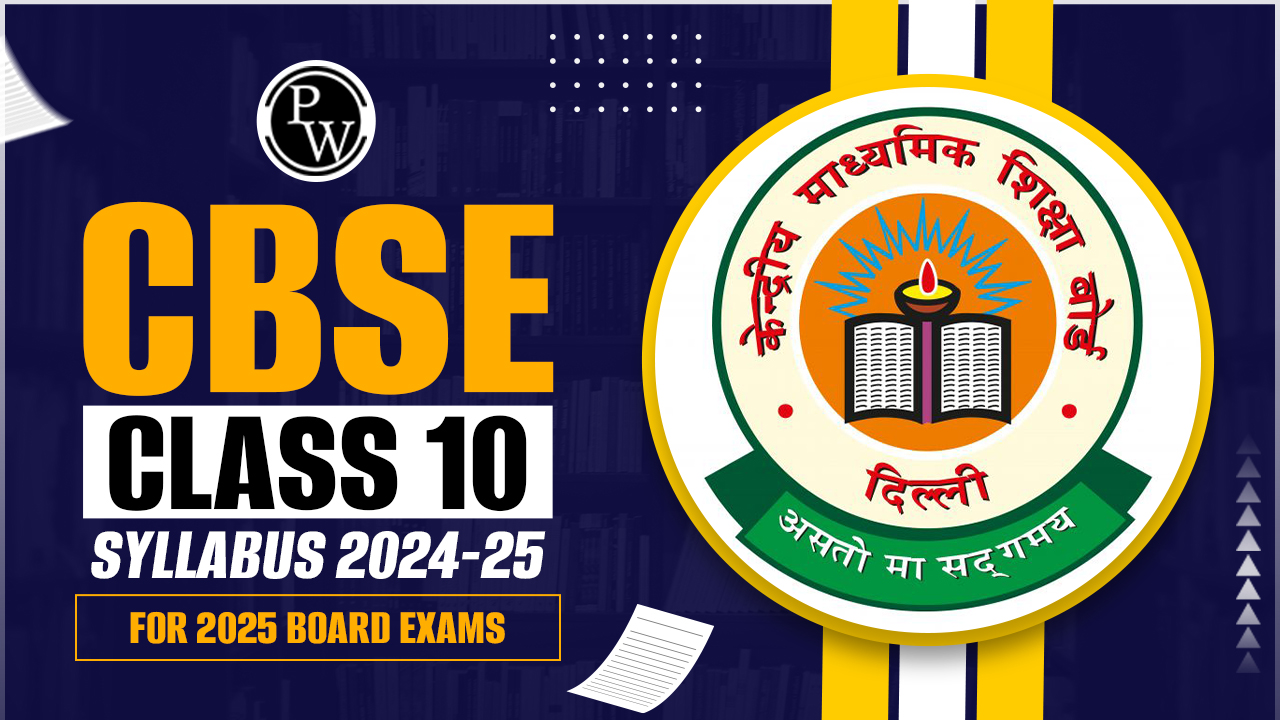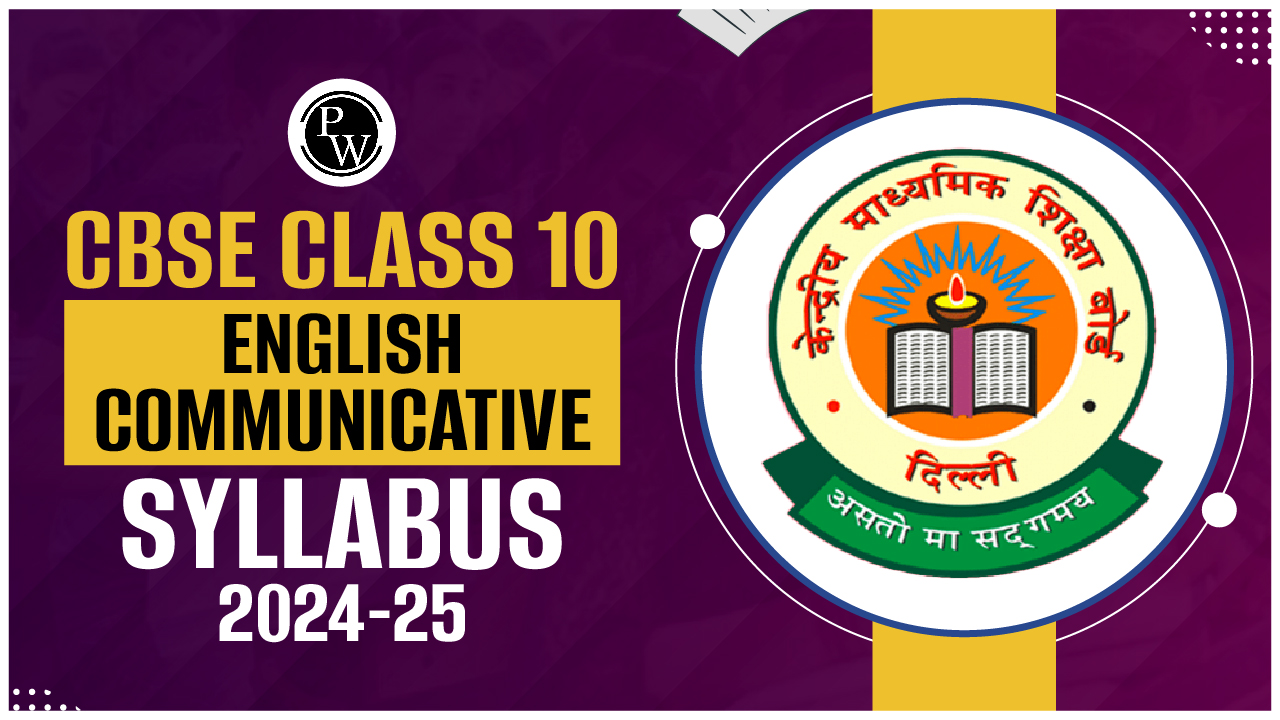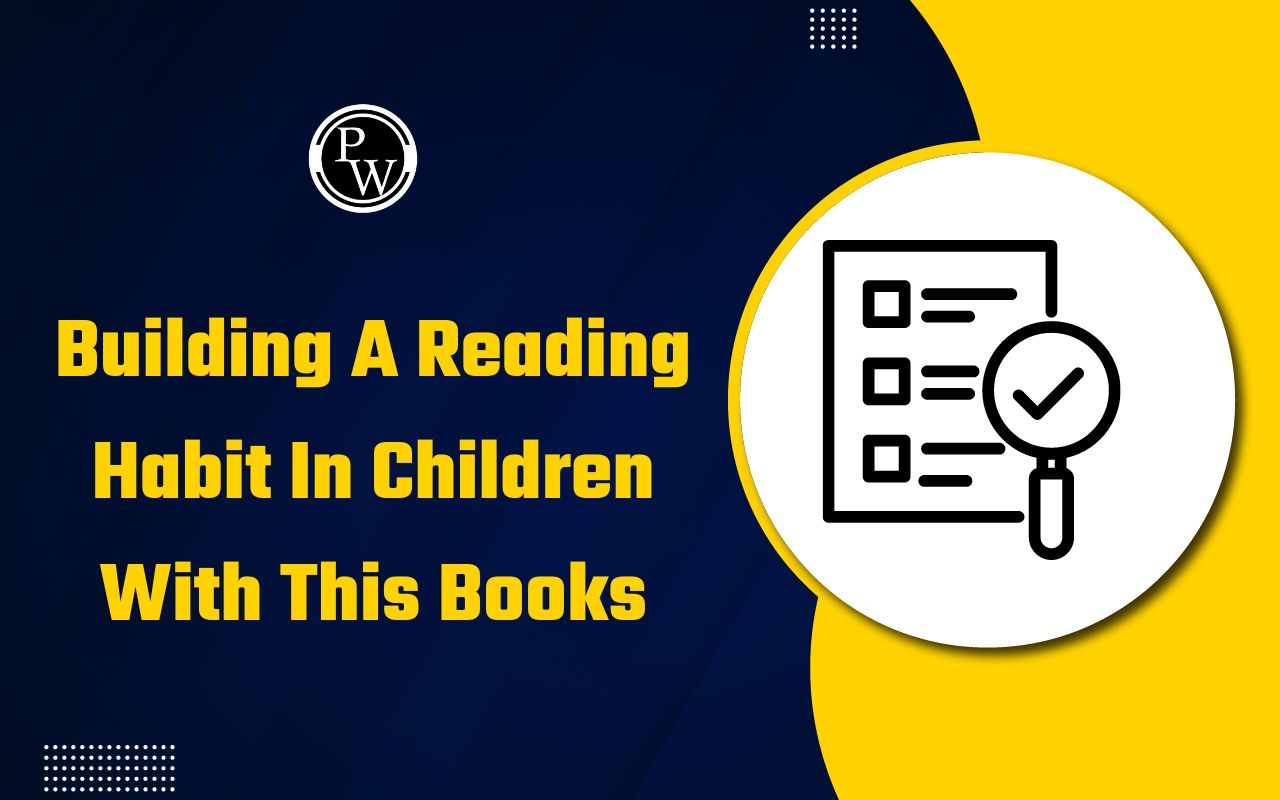CTET Syllabus and Exam Pattern
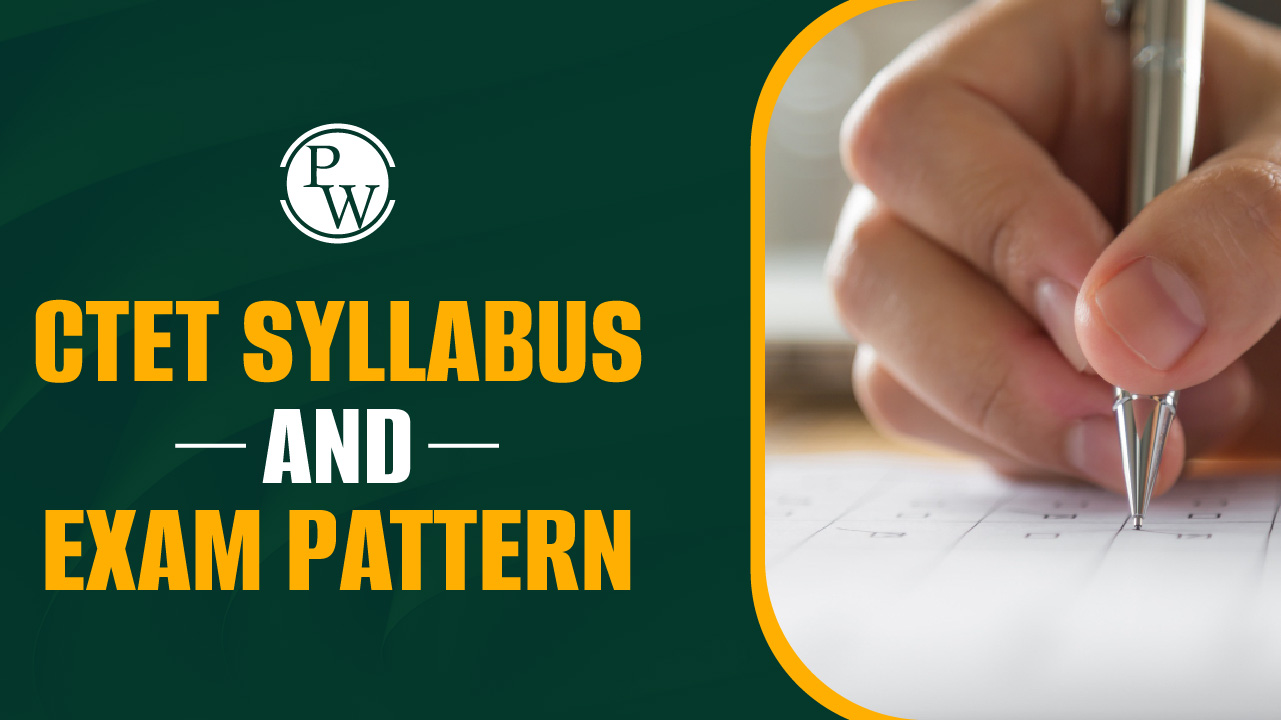
CTET stands for Central Teacher Eligibility Test. It is a big exam that happens twice every year. The Central Board of Secondary Education (CBSE) runs the exam twice a year. A CTET certificate lets you apply for teaching jobs in many government and private schools across India. This exam helps you get ready to teach children in schools across India. Because many people sit for the paper, careful study of the CTET exam syllabus gives you an edge. The test has two parts, called Paper 1 and Paper 2. Each paper tests different skills and knowledge. The CTET 2025 is expected to be held in July 2025, giving candidates ample time to prepare based on the detailed syllabus.
Check Out - CTET Books
CTET Exam Pattern
The CTET exam pattern is quite simple to understand. Understanding the CTET pattern helps you manage time during the test. Here’s the quick view of the CTET exam pattern:
|
Feature |
Paper 1 |
Paper 2 |
|
For Classes |
1–5 |
6–8 |
|
Total Questions |
150 |
150 |
|
Total Marks |
150 |
150 |
|
Time |
2½ hours |
2½ hours |
|
Marking |
+1 for correct, 0 for wrong |
+1 for correct, 0 for wrong |
|
language |
Hindi, English+18 languages |
Hindi, English+18 languages |
The good news is that there is no negative marking. This means you won't lose marks for wrong answers. So you can try to answer all the questions.
CTET 1st Paper Syllabus: For Primary Teachers
The CTET 1st paper syllabus covers five main subjects. Let's look at each one:
Child Development and Pedagogy (30 Questions)
This section carries 30 MCQs divided into three units:
-
Child Development (Primary School Child) - 15 MCQs
-
Concept of development and its relationship with learning
-
Principles of child development
-
Influence of heredity and environment
-
Socialization processes
-
Theories by Piaget, Kohlberg, and Vygotsky
-
Child-centered and progressive education
-
Intelligence concepts and multi-dimensional intelligence
-
Language and thought development
-
Gender as a social construct
-
Individual differences among learners
-
Assessment methods and evaluation
-
Inclusive Education and Understanding Children with Special Needs - 5 MCQs
-
Addressing learners from diverse backgrounds
-
Addressing needs of children with learning difficulties
-
Supporting talented, creative, and specially abled learners.
-
Learning and Pedagogy - 10 MCQs
-
Children's thinking and learning processes
-
Teaching and learning processes
-
Problem-solving approaches
-
Alternative learning conceptions
-
Cognition, emotions, and motivation in learning
-
Factors contributing to learning
Read More - CTET Previous Year Question Papers with Solutions, Download PDF
Language I (30 Questions)
Language I refers to the medium of instruction chosen by the candidate. This section contains 30 MCQs divided into two parts:
-
Language Comprehension - 15 MCQs
-
Reading unseen passages (prose/drama, and poem)
-
Questions on comprehension, inference, grammar, and verbal ability.
-
Pedagogy of Language Development - 15 MCQs
-
Learning and acquisition principles
-
Language teaching principles
-
Role of listening and speaking
-
Grammar's role in language learning
-
Challenges of teaching language in diverse classrooms
-
Language skills evaluation
-
Teaching-learning materials
-
Remedial teaching approaches.
Language II Section
Language II must be different from Language I and follow a similar structure with 30 MCQs:
-
Language Comprehension - 15 MCQs
-
Two unseen prose passages
-
Questions on comprehension, grammar, and verbal ability.
-
Pedagogy of Language Development - 15 MCQs
-
Similar topics to the Language I pedagogy section
4. Mathematics (30 Questions)
The Mathematics section tests both content knowledge and pedagogical understanding with 30 MCQs:
-
Content - 15 MCQs
-
Geometry and shapes
-
Numbers and operations
-
Measurement concepts
-
Data handling
-
Patterns
-
Money concepts
-
Pedagogical Issues - 15 MCQs
-
Nature of mathematics and logical thinking
-
Mathematics in the curriculum
-
Language of mathematics
-
Evaluation methods
-
Teaching problems
-
Diagnostic and remedial teaching
5. Environmental Studies (30 Questions)
The final section of Paper 1 covers Environmental Studies with 30 MCQs:
-
Content - 15 MCQs
-
Family and relationships
-
Work, play, animals, and plants
-
Food, shelter, and water
-
Travel
-
Human creations and activities
-
Pedagogical Issues - 15 MCQs
-
Concept and scope of EVS
-
Integrated EVS approach
-
Environmental education
-
Learning principles
-
Relation to science and social science
-
Teaching approaches and activities
-
Teaching materials and aids
-
Common problems in teaching EVS
CTET Exam Paper 2 Syllabus: For Upper Primary Teachers
1. Child Development and Pedagogy (30 Questions)
This is similar to Paper 1 but focuses on older children (ages 11-14). You need to understand:
Similar to Paper 1, this section has 30 MCQs but focuses on the educational psychology relevant to the 11-14 years age group:
-
Child Development (Elementary School Child) - 15 MCQs
-
Development concepts and learning relationship
-
Child development principles
-
Heredity and environment influence
-
Socialization processes
-
Theories of development
-
Intelligence concepts
-
Language and thought
-
Gender-related issues
-
Individual differences
-
Assessment methods
-
Inclusive Education and Understanding Children with Special Needs - 5 MCQs
-
Similar topics to those in Paper 1, tailored for the upper primary level
-
Learning and Pedagogy - 10 MCQs
-
Similar topics to those in Paper 1, focusing on the learning processes of older children
2. Language I and Language II (30 Questions Each)
Language I Section
-
The structure remains the same as Paper 1, with 30 MCQs, but the difficulty level is higher to match the upper primary teaching requirements1.
Language II Section
-
Similar to Paper 1, the Language II section has 30 MCQs with increased complexity appropriate for upper primary teachers
3. Mathematics and Science OR Social Studies
Candidates have to choose between Mathematics and Science, OR Social Studies/Social Sciences, based on their teaching preference:
Mathematics Section (for Mathematics and Science teachers)
-
Questions- 20 MCQs
-
Number system
-
Algebra
-
Ratio and proportion
-
Geometry
-
Mensuration
-
Data handling
-
Pedagogical Issues - 10 MCQs
-
Nature of mathematics
-
Mathematics in the curriculum
-
Language of mathematics
-
Evaluation methods
-
Remedial teaching
Science Section (for Mathematics and Science teachers)
Questions - 20 MCQs
-
Food sources and components
-
Materials of daily use
-
And other science topics appropriate for Classes 6-8
Read More - Study Timetable for CTET Exam
How to Use the CTET Syllabus for Study
Now that you know the CTET exam syllabus, here's how to study smart:
1. Make a Study Plan
-
Look at all the topics in the syllabus
-
Give more time to subjects you find hard
-
Practice with old question papers
-
Take mock tests to check your progress
2. Focus on Teaching Methods
The CTET pattern includes many questions about how to teach. Learn:
-
Different ways to explain topics to children
-
How to make learning fun
-
Ways to help children who learn slowly
-
How to check if children understand lessons
3. Practice Reading Comprehension
Both papers have reading passages. Practice:
-
Reading different types of texts
-
Understanding the main ideas
-
Finding details in passages
-
Answering questions about what you read
4. Learn Child Psychology
Understanding how children think is very important. Study:
-
How children grow and change
-
What makes children want to learn
-
How to handle different types of learners
-
Ways to solve classroom problems
Differences Between Papers 1 and 2
-
Paper 1 is simpler, covering basics for young kids.
-
Paper 2 has advanced topics like algebra or Indian history.
Important Tips for CTET Success
Know the Exam Format
The CTET pattern is always the same. Each paper has:
-
150 multiple-choice questions
-
4 options for each question
-
1 mark for each right answer
-
No marks taken away for wrong answers
Time Management
You have 2.5 hours for 150 questions. That means:
-
About 1 minute per question
-
Don't spend too much time on hard questions
-
Answer easy questions first
-
Come back to hard ones later
Study Materials
Use good books and resources that cover the complete CTET exam syllabus. Books made just for CTET and PYQ, mainly for familiarization with past exam questions.
You Must Avoid During CTET Preparation
You must avoid these mistakes while preparing for the CTET exam.
Don't Skip Any Section
Some people think they can skip hard topics. But questions come from all parts of the CTET exam syllabus. Study everything at least a little bit.
Don't Just Memorize
The test checks if you understand concepts, not just remember facts. Focus on:
-
Understanding why things work
-
Connecting different ideas
-
Thinking about real classroom situations
Don't Ignore Practice Tests
Taking practice tests helps you:
-
Get used to the question style
-
Learn to manage time
-
Find weak areas to work on
-
Build confidence for the real test
After Passing the CTET
Once you pass the CTET, you get a certificate that is good for 7 years. This certificate helps you:
-
Apply for teaching jobs in government schools
-
Show that you know how to teach children
-
Move forward in your teaching career
Remember, passing the CTET is just the first step. You still need to apply for teaching positions and do well in interviews.
The Central Teacher Eligibility Test syllabus might look big at first. But if you study step by step and understand each topic well, you can pass this exam. The key is to start early and study regularly.
Focus on understanding how children learn and grow. Practice reading passages and solving problems. Most importantly, think about why you want to be a teacher. Your love for teaching will help you get through the hard parts of studying.
Read More: CTET Previous Year Question Papers with Solutions, Download PDF
CUET Syllabus and Exam Pattern FAQs
1. How many questions are there in the CTET exam pattern?
The CTET exam pattern includes 150 multiple choice questions in each paper. Paper 1 has 30 questions from each of the five subjects, while Paper 2 has 30 questions each from Child Development, Language-I, and Language-II, plus 60 questions from either Math & Science or Social Studies.
2. What is the difference between CTET 1st paper syllabus and Paper 2?
The CTET 1st paper syllabus is for teachers wanting to teach Classes 1-5 and includes Environmental Studies. The CTET exam paper 2 syllabus is for Classes 6-8 teachers and replaces Environmental Studies with either Mathematics & Science or Social Studies at a higher difficulty level.
3. Can I take both CTET Paper 1 and Paper 2 on the same day?
Yes, you can appear for both papers on the same day if you want to be eligible to teach both primary (Classes 1-5) and upper primary (Classes 6-8) levels. Many candidates choose this option to increase their job opportunities.
4. What is the validity of the CTET certificate?
The CTET certificate is valid for 7 years from the date of declaration of results. During this period, you can apply for teaching positions in government schools across India that require CTET qualification.
